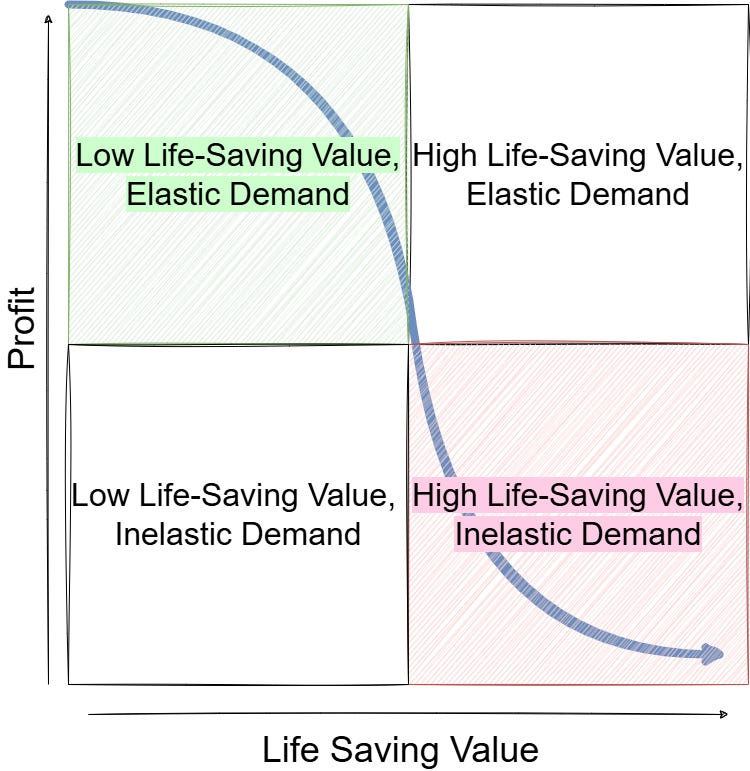The Tension Between Science and Profits
When Science Meets the Bottom Line
In the medtech and biotech companies I’ve worked for, I’ve observed a distinct reluctance among scientists to embrace commercial activities required to promote or sell a product.
This pushback intrigues me because, while scientists are passionate about making new discoveries to help people, they understand that truly impacting lives often requires spinning out companies and developing products. It’s at this juncture that many scientists face a crisis of conscience and ethics. They feel uneasy running a commercial, for-profit enterprise. Yet, to make a difference, their ventures must be profitable, and they need to engage in commercial activities—from product development to sales—so their products can be built, reach the right people, and ultimately make a difference.
Why does this feel so uncomfortable for scientists? The reality is that profitable businesses are essential for delivering great products into the hands of those who need them.
To be clear, this isn’t about profits at the expense of ethics. It’s about recognising that we can be both profitable and ethical.
Balancing Profit and Ethics
Market forces, such as competition, naturally limit how much profit a company can make. There’s only so much customers are willing to pay. However, these forces can break down in two scenarios: when a product is life-saving, or when a company achieves a monopoly.
Life-saving drugs often exhibit price inelasticity—meaning customers are willing to pay whatever they can afford to access the product. Insulin pricing is a prime example. Despite being a century-old discovery, insulin costs remain prohibitively high in some countries because those who need it have no alternatives.
Similarly, monopolies create price inelasticity because customers have no other options. In these cases, where the market fails, governments often step in with regulatory measures. For instance, price caps and subsidies help ensure life-saving drugs remain accessible, while antitrust actions aim to break up monopolistic practices.
A Simple Framework for Ethical Pricing
One approach to balance profitability and ethics is to map the relationship between the life-saving value of a product and its pricing elasticity.
Imagine a graph: on the x-axis, the life-saving value of the product, and on the y-axis, the profit margin that can reasonably be charged. This relationship shouldn’t be linear. As the life-saving importance of a product increases, profit margins should flatten—especially in cases where the product is life-saving and has no substitutes.

For example, a wellness supplement or fitness tracker with low life-saving value and elastic demand may have a higher profit margin because customers have alternatives and the product is non-essential. On the other hand, a life-saving drug like insulin, particularly in a monopolistic situation, should be priced more modestly to reflect its critical role in society and ensure accessibility.
By recognising where their products fall on this spectrum, companies can align pricing with ethical and business goals. In most cases, market forces will constrain pricing naturally. But in scenarios where they don’t—such as inelastic demand for life-saving treatments—leadership should exercise restraint and adopt fair pricing practices. This approach builds trust with consumers while fostering long-term sustainability for the business.
Elastic vs Non-Elastic Demand
For products with competition—those with elastic demand—market conditions allow companies to freely charge what they need to grow and remain profitable. This applies to non-essential items where customers can weigh the cost against available alternatives.
But when a product enters a non-elastic demand scenario—such as life-saving treatments—leadership has a responsibility to price fairly and within societal norms. If they cannot or will not, then government intervention is necessary to artificially constrain pricing, ensuring the product remains accessible to those who need it most.
Ethics and Profits Can Be Complementary
Finding product-market fit and pursuing profits is not at odds with ethical behaviour. By recognising where our medical products fall on the spectrum of life-saving value and demand elasticity, we can price them appropriately. In most cases, market forces will naturally constrain the profits that can be drawn. However, in situations where these constraints do not exist, it falls to us as leaders to exercise restraint. By offering well-priced products, we can build trust with consumers and foster long-term sustainability for both the business and its mission.
Profitability and ethics don’t have to be at odds—they can, and should, coexist.

